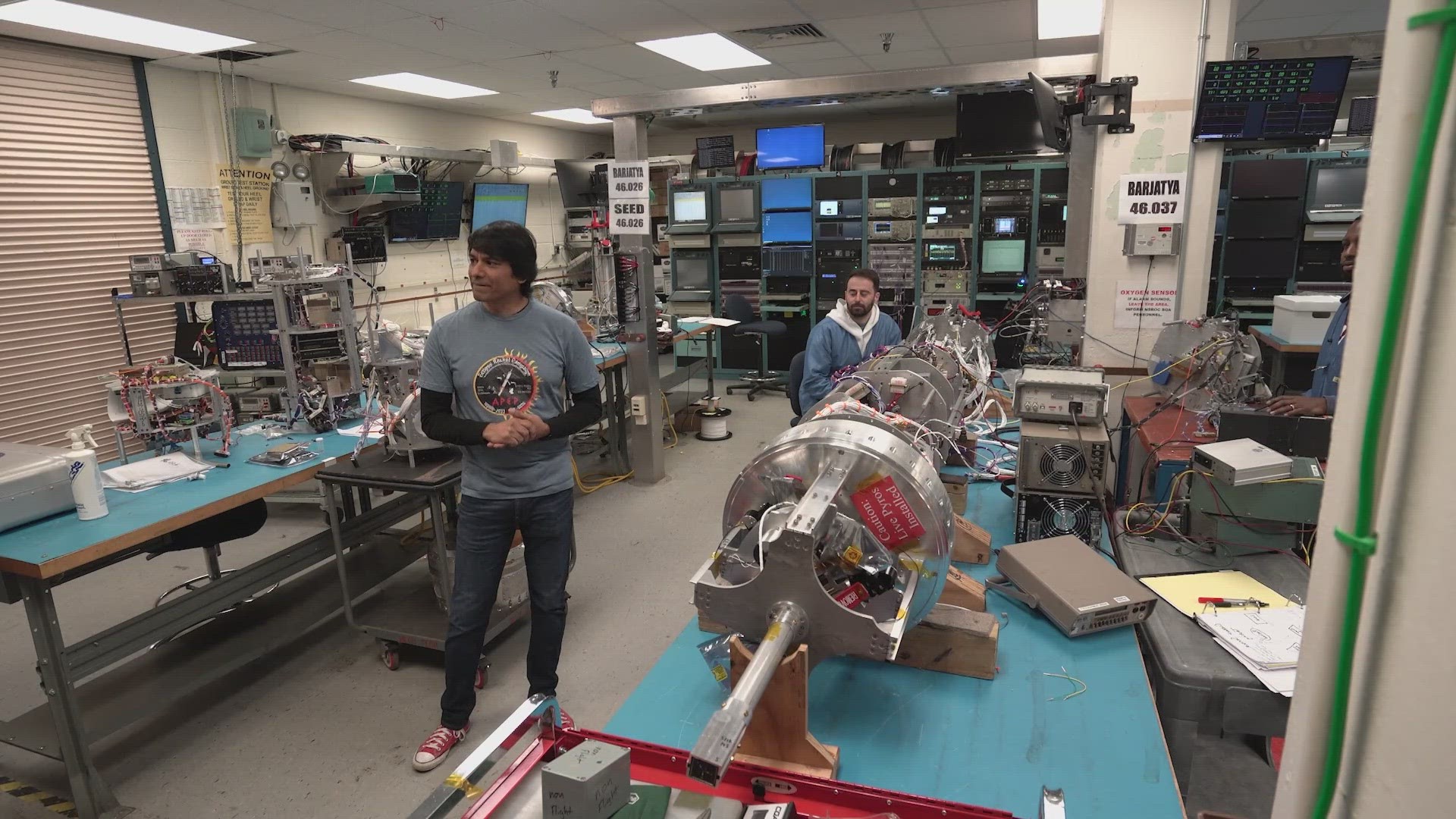WASHINGTON — When the moon blocks the sun during the eclipse Monday, it will cast a supersonic cooling shadow on Earth. This will give scientists the opportunity to study how the atmosphere changes and how that affects us down here on earth.
Sounding rockets are capable of collecting a large amount of accurate data in a very short period of time, making them ideal for studying phenomena like Atmospheric Perturbations around the Eclipse Path - or APEP - which is the name of NASA’s upcoming mission.
“Eclipse gives us a unique opportunity because we know where it is happening, when it is happening to study not just what eclipse can do, but also how those basic phenomena physics phenomena happen and propagate," explains Dr. Aroh Barjatya, the principal investigator of the APEP mission. "And whatever we learn is applicable for other situations as well, not just eclipse.”
The region being studied is called the ionosphere. It's a part of the atmosphere 50 to 300 miles above earth's surface. Scientists want to better understand how the ionosphere changes during unusual events, and this is where the eclipse comes into play. Think of the ionosphere as a pond with gentle ripples. The eclipse will be like a motorboat flying through the water, creating a wake immediately underneath and behind it.
“That localized effect kind of creates a whip lash where the ionospheres density comes down and comes back up rapidly,” says Barjatya.
So why should we care about disturbances like this in the atmosphere?
“We are an increasingly connected society with radio signals everywhere, and all of these perturbations reduce the strength of the radio signals," Barjatya explains.
“The better we can understand it through this mission, the better we can make that technology work,” adds Maxim King, the Campaign Manager for the APEP mission.
The rockets will be in flight for only 10 to 15 minutes. During that time they will send back valuable data that can only be collected during an eclipse. Then the rockets crash into the ocean.


Prepping for flights like this takes years. There's all the engineering, assembly and then testing.
“These vibration tables are basically like a large speaker and we’re going to pump a lot of sound and vibration into it that replicates the flight environment and actually goes above and beyond the flight environment so that if anything is going to break, it’s going to break here,” says King.
And during the total solar eclipse, NASA will launch three sounding rockets in search of information to better understand the atmosphere around us.
One of the rockets will be launched 45 minutes before the peak eclipse time, one during the peak, and another 45 minutes after the peak. If you want to see the rockets being launched, you can head to Wallops Island. The Visitor Center is hosting an eclipse watch party where, yes, you can also see the rockets take off.
Do you have a news tip on this story or any other story? We want to hear from you. Tell us about it by emailing newstips@wusa9.com.
MORE WAYS TO GET WUSA9
DOWNLOAD THE WUSA9 APP
Apple App Store: WUSA9 News on Apple
Google Play Store: WUSA9 News on Android
HOW TO ADD THE FREE WUSA9+ APP TO YOUR STREAMING DEVICE
ROKU: add the channel from the ROKU store or by searching for WUSA9.
For both Apple TV and Fire TV, search for "WUSA9" to find the free app to add to your account. Another option for Fire TV is to have the app delivered directly to your Fire TV through Amazon.
SIGN UP TO RECEIVE WUSA9 NEWSLETTER
Subscribe to our daily WUSA9 Newsletter for top stories from WUSA9 curated daily just for you. Get content and information right now for can’t-miss stories, Commanders content, weather, and more delivered right to your inbox.

